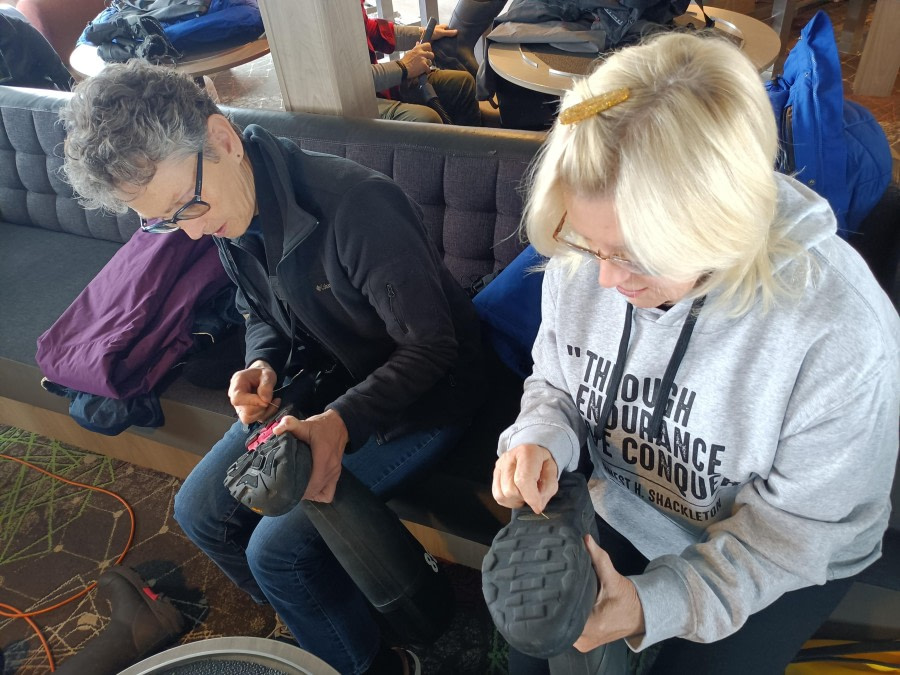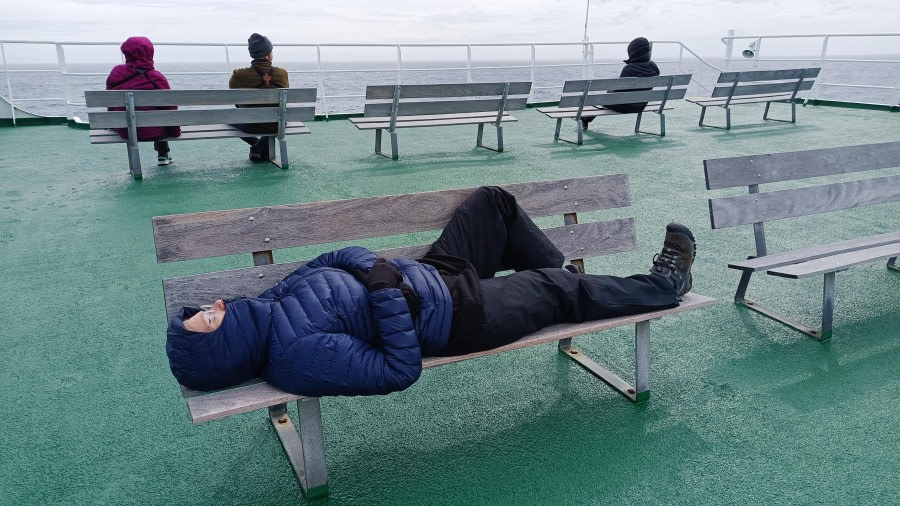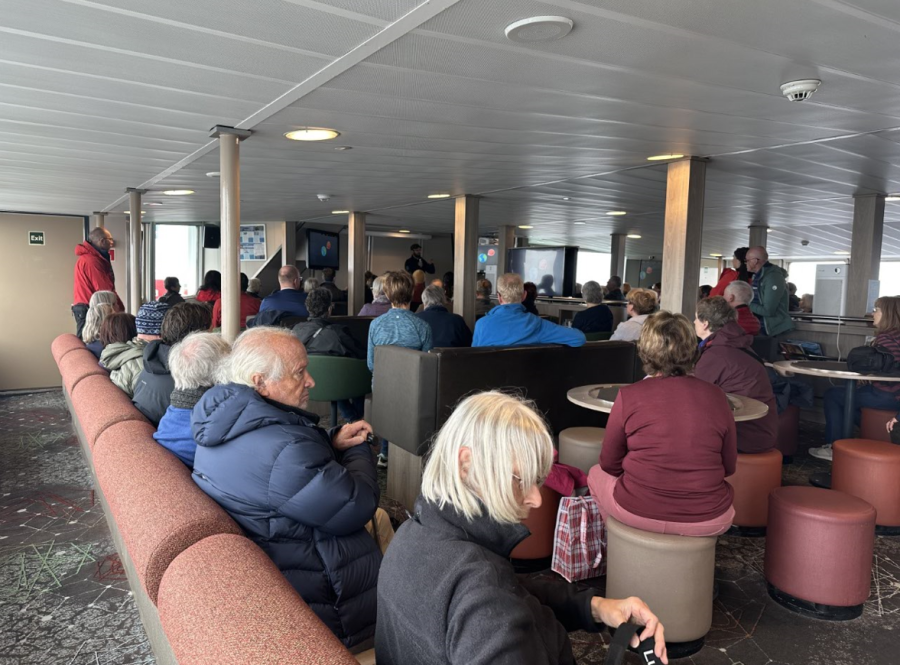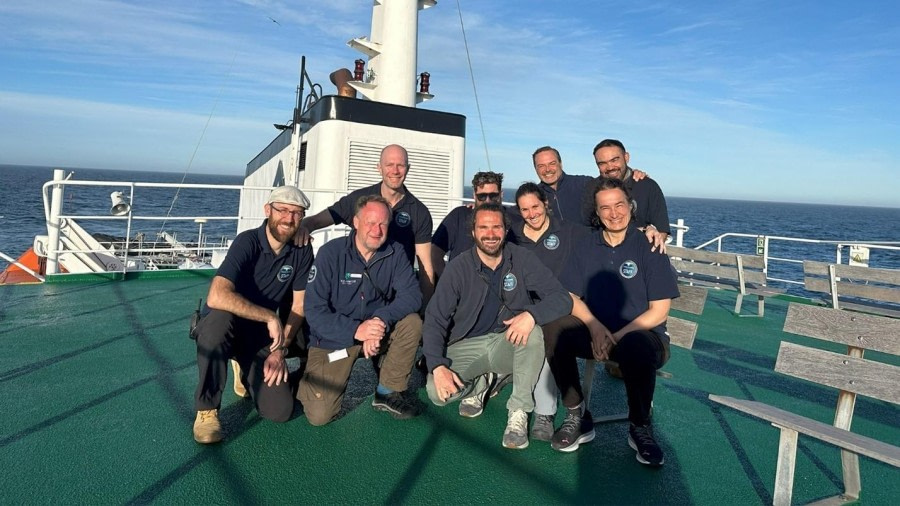| Fecha: | 16.01.2024 |
| Posición: | 54° 48.6'S / 66° 54.0'W |
| Viento: | E-2 |
| Clima: | nublado |
| Temperatura del Aire: | +6 |
Por fin había llegado el día, ¡y nuestra expedición a la Antártida estaba a punto de comenzar! Nos encontrábamos en Ushuaia, en la parte más meridional de Argentina, también llamada el fin del mundo. Durante nuestra expedición, iríamos aún más al sur.
No se esperaba que embarcáramos en el Plancius hasta las 16:00 horas. Eso nos dio tiempo para recuperarnos del largo viaje hacia el sur y explorar la ciudad de Ushuaia. Esta pequeña ciudad ofrece un montón de cafés y pastelerías, así como muchas tiendas al aire libre. Ushuaia es una ciudad acogedora e ideal para comprar artículos de última hora como gorros, guantes u otra capa para mantener el calor.
A las 16:00 era hora de subir por la pasarela del Plancius. Fuimos recibidos en el muelle por miembros del equipo de expedición, y el director del hotel nos registró rápidamente. No hubo mucho tiempo para relajarse, ya que a las 17:15 estaba previsto un simulacro de seguridad obligatorio, por lo que nuestra presencia en el salón era necesaria. Nos dio la bienvenida el jefe de expedición, Eduardo, y el oficial jefe nos guió a través de un vídeo de seguridad y el procedimiento del simulacro. Después nos sentamos todos en el salón, con nuestros voluminosos chalecos salvavidas naranjas. Cuando oímos la alarma de abandono del buque, nos dirigimos al exterior, a los botes salvavidas, donde el segundo oficial nos informó con más detalle.
Una vez realizado el simulacro obligatorio, llegó el momento de soltar las amarras, arrancar los motores y dejar atrás el puerto de Ushuaia. El capitán bajó al salón y nos saludó con una copa de champán, dirigiéndonos unas cálidas palabras de bienvenida. A continuación, Eduardo nos dio más información sobre el programa para los días siguientes.
Pronto llegó la hora de cenar. El equipo de cocina había preparado un delicioso bufé, y el comedor bullía de entusiasmo. Los miembros del equipo de expedición también se unieron a la cena, lo que supuso una primera oportunidad para conocerse. Después de un día largo e intenso, era hora de descansar. Algunos decidimos pasar un rato en la cubierta para disfrutar de la hermosa luz dorada. En los próximos 19 días, ¡nos veremos mucho! Al navegar por el Canal de Beagle, nos encontramos con varios Rorcuales comunes y Delfines, un gran comienzo de viaje.














